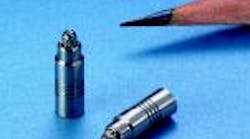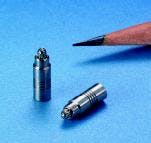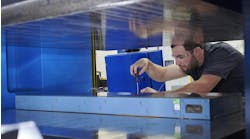The 156 Jet, 0.156 in. diameter, single orifice restrictor uses the same technology as larger sizes. It weighs 0.7 g nominal and is 42% lighter and 12.5% shorter than older versions, which provides a reduced installation boss size and weight. It is available in 34 standard Lohm rates (3000 to 30,000 Lohms) and is 100% bidirectionally flow tested for accurate performance.
The Lee Co., (860) 399-6281,www.theleeco.com
The Lee Co., (860) 399-6281,www.theleeco.com


